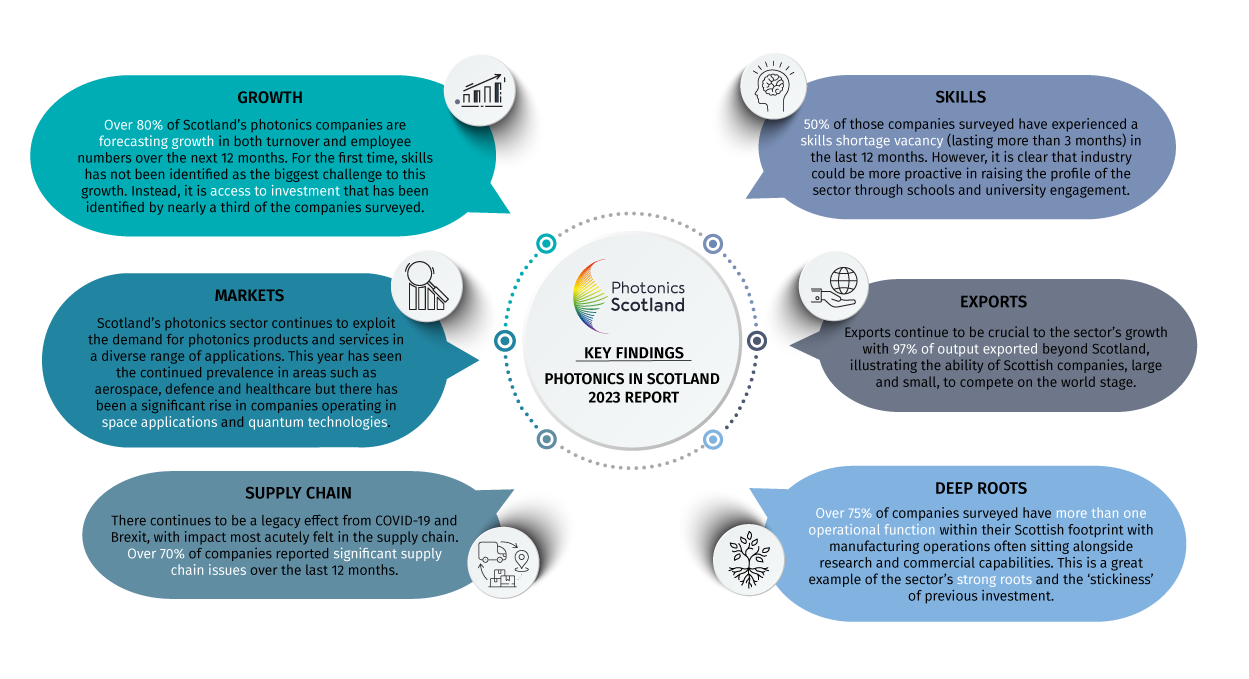Annual survey highlights continued growth and deep roots within Scotland’s photonics sector.

Photonics Scotland has today published the results of its Photonics in Scotland 2023 survey.
This survey, run annually since 2020, provides an important health check for the sector and generates vital insight to the progress and challenges towards our 2030 growth ambitions.
Once again, our survey highlights the resilience of our photonics sector. Despite the challenging global landscape, which continued throughout 2022-2023, results from this year’s survey reflect a growing and vibrant sector and one in which future sentiment remains optimistic.
Over 60% of companies surveyed reported revenue growth over the last 12 months with a further 31% showing steady turnover. Perhaps even more encouragingly, over 80% of companies surveyed are forecasting increased revenues and head count over the next 12 months. Indeed, over 50% of companies are forecasting double digit revenue growth for this period.
Of course, challenges remain and for the first time since the Photonics Scotland Annual survey started in 2020, access to skills has not been identified as the biggest barrier to the sectors growth ambitions. Indeed, it comes a lowly third behind access to investment and access to international markets. However, while investment and internationalisation are rightly identified as key challenge areas, it is Technology Scotland’s view that these results may indicate a sense of fatigue with the skills challenge. It is our interpretation that the skills challenge is now so ubiquitous that it is ‘taken as a given’ leading our members to highlight additional areas of challenge. This potential fatigue, while understandable, is somewhat concerning and we must continue, as a sector, to address this issue.
To emphasise the continuing skills challenge, results showed that 1 in 2 companies experienced a skills shortage vacancy lasting more than 3 months in the last year. However, the survey also highlighted that more can be done within the sector to raise its profile and engage with the future talent pool. With half of companies surveyed conducting no engagement with schools or universities, there is work to be done.
The survey also provided important evidence of the deep roots of the sector in Scotland with over 75% of companies reporting more than one operational function within their Scottish footprint i.e., manufacturing, research, sales and marketing, consultancy. This important parameter provides an important measurement of the ‘stickiness’ of the sector, an important consideration in the context of domestic and foreign investment.
With the potential of Scotland’s photonics capabilities recognised within our National Innovation Strategy and National Strategy for Economic Transformation, results from this survey provide timely evidence that the Scottish Government’s recent and welcome focus on the sector is justified and that the sector is set to play an important role in Scotland’s economic future.
